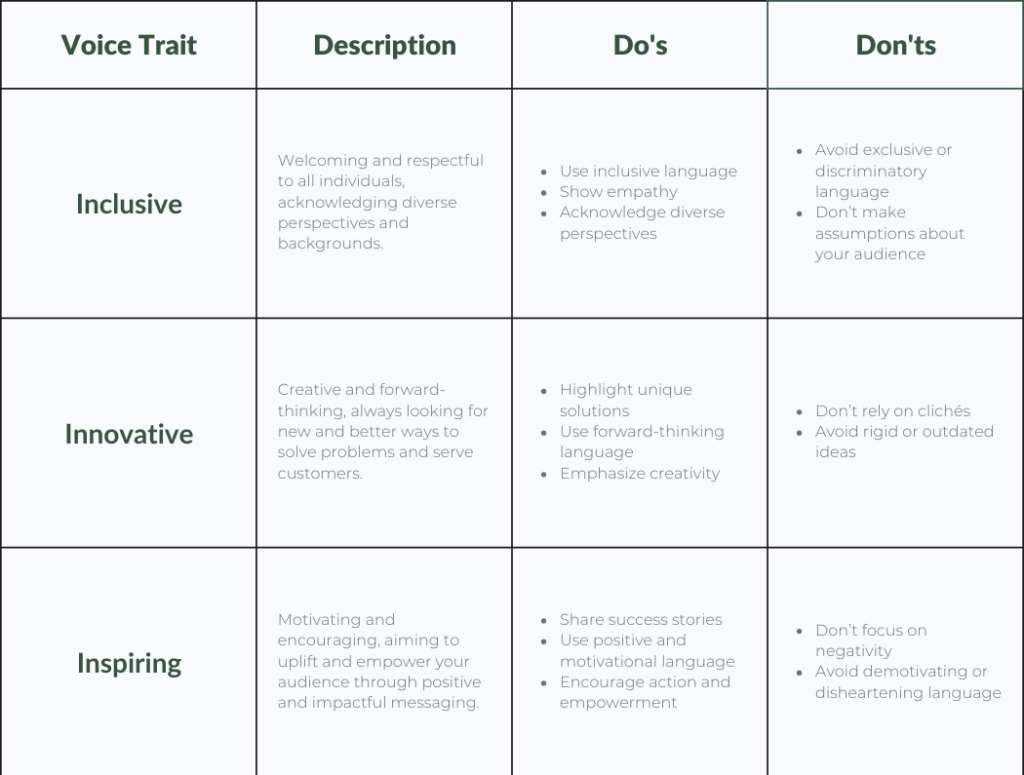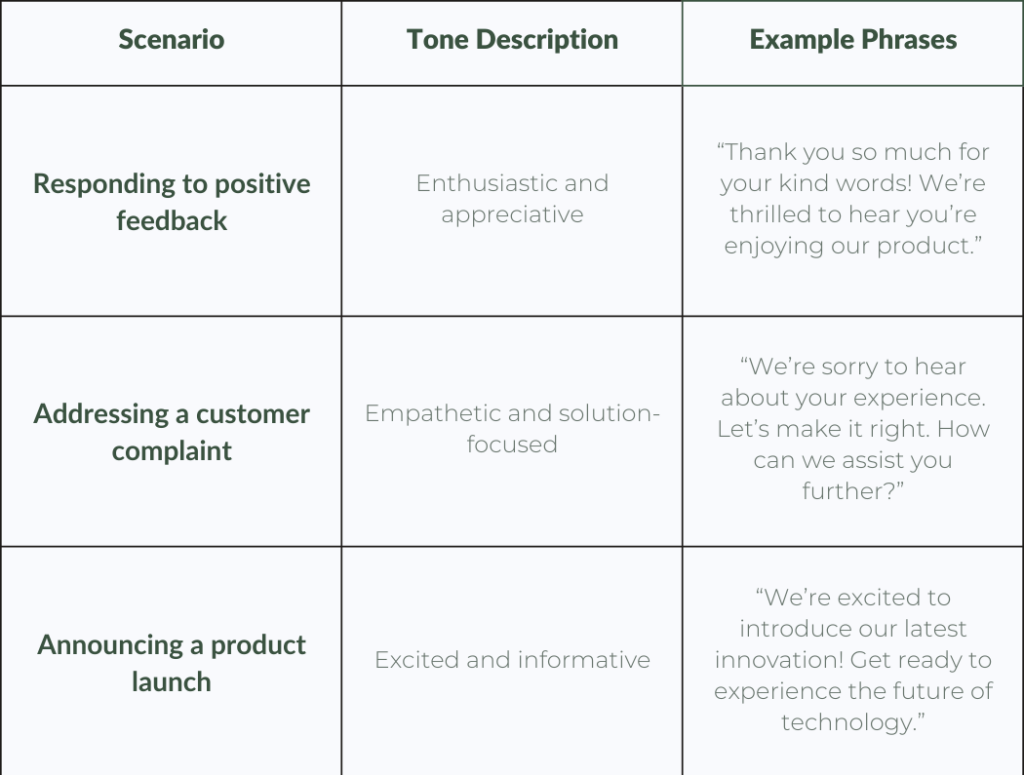Consistency Is Key: Brand Voice and Tone Guidelines to Streamline Your Marketing
Discovering and conveying your brand voice and tone throughout your marketing efforts is essential for creating a cohesive brand identity. In this blog, we will guide you through discovering your brand adjectives, writing your brand story, and coming up with some brand tone and voice guidelines to streamline your marketing. This guideline will be invaluable when training employees or outsourcing your marketing.
Discovering Your Brand Adjectives

First, let’s start with some brand adjectives. Review the list below and make note of adjectives that resonate with you. Think about your business values, and feel free to add your own.
Take your time to ponder these words. Next, narrow down your choices by discussing them with a trusted friend or partner. Circle your top 3-4 adjectives. This will help you streamline your marketing by focusing on the most important aspects of your brand identity.
Engaging with Your Audience
To dive deeper and find your true brand voice and tone, engage with your audience. Ask questions like “What three words describe our company?” or “Which values do you associate with our brand?” You can use various channels to gather this feedback:
- Online surveys: SurveyMonkey, Google Forms
- Social media polls: Twitter, Facebook, Instagram
- Direct feedback: Email, customer service, face-to-face
Encourage participation by offering incentives like discounts, freebies, or entry into a prize draw. Once you’ve collected feedback, analyze it to identify the most frequently mentioned values. This will help you streamline your marketing by understanding what resonates most with your audience.
Writing Your Brand Story
Imagine your brand as a person and answer the following questions:
- What kind of person is your brand (e.g., a mentor, a friend, a leader)?
- How does your brand communicate (e.g., formal, casual, humorous)?
- What are your brand’s hobbies or interests (e.g., technology, community service)?
Share these reflections with your team or a friend, or review the information on your own. Examine the common themes, adjectives, and personality traits from your reflections. This will help you identify the core elements of your brand’s voice and tone.
Based on the information you’ve gathered, write a short story about your brand. Include its origins and values. Reflect on the emotions and personality traits it embodies. This will streamline your marketing by providing a clear and consistent narrative.
Here’s an example from Virtual Spirit Strategy:
In British Columbia, an Indigenous woman founded Virtual Spirit Strategy, a marketing company rooted in Indigenous traditions of connection, community, creativity, and empowerment. Virtual Spirit Strategy honors Indigenous values through powerful storytelling, with a warm and respectful approach. The founder is actively engaged in community-building activities, reflecting a commitment to uplifting others. The brand voice is inclusive, innovative, and inspiring, blending modern marketing with Indigenous wisdom. This creates strong connections and fosters trust with clients. By staying true to its values, Virtual Spirit Strategy has streamlined its marketing efforts, establishing a consistent and compelling brand identity. Clients know that choosing Virtual Spirit Strategy means embracing the principles of connection, community, creativity, and empowerment.
Brand Voice & Tone Guidelines
Creating comprehensive guidelines and charts helps you and your team maintain consistency across all marketing strategies and platforms, effectively streamlining your marketing efforts.
Defining Brand Voice vs. Brand Tone
Before we dive in, it’s essential to distinguish between your brand voice and your brand tone:
- Brand Voice: This refers to your brand’s personality—the unique way you communicate with your audience, encapsulating your values, mission, and overall character.
- Brand Tone: This is the emotional inflection applied to your brand voice, which can vary depending on the context and situation to ensure your message resonates appropriately with your audience.
Setting the Guidelines for Your Brand Voice
Identify Key Attributes: List three core attributes that define your brand voice. Examples might include:
- Inclusive
- Innovative
- Inspiring
Create a Voice Example: Provide an example of how your brand voice speaks. For instance:
- “At Virtual Spirit Strategy, we believe in pushing boundaries and embracing diversity. Our mission is to innovate, inspire, and create inclusive opportunities for everyone.”
Voice Chart: Develop a voice chart to guide your communications. Here’s a sample format:

Setting the Guidelines for Your Brand Tone
Identify Tone Attributes: List three attributes that define your brand tone with examples. Examples might include:
- Friendly
- Professional
- Empathetic
Tone Guide: Create a tone guide for when to use certain tones in your communications. Here’s a sample format:

Having a well-defined brand voice and tone guideline ensures that your brand identity is conveyed consistently across all platforms and marketing strategies. It makes training employees or outsourcing your marketing more efficient and effective. By taking the time to discover your brand adjectives, write your brand story, and set clear guidelines, you are setting your brand up for success and streamlining your marketing.





